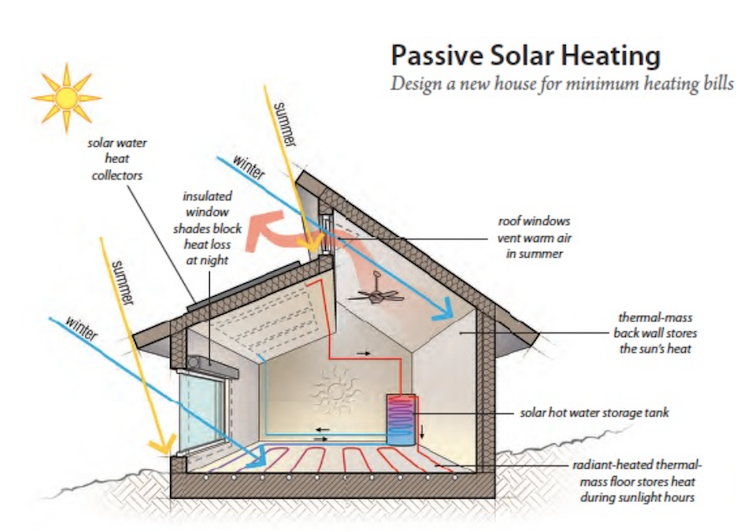SOLARTODAY April 8, 2014

 By SETH MASIA
By SETH MASIA
In most parts of the United States, the largest part of a home’s energy budget goes to winter heating. A typical snow-belt home with an oil-burning furnace or electric heat can spend more than $2,000 over the winter. (Natural gas is considerably cheaper, but the price bounces up and down.)
Passive solar design sharply reduces heating costs by gathering and storing the sun’s heat during the day and gradually releasing it to the living space after dark. The term “passive” implies that no outside energy or active mechanisms are used to move the sun’s heat through the house. A passive house may rely on some moving parts: windows and vents that need to be opened and closed to regulate temperature on sunny days and insulated drapes, blinds or shutters that can be closed to seal in heat at night.
The principles: Build the house with large windows facing the sun. (In North America, that’s south, of course.) Use insulated glass that lets heat energy pass in and then holds it inside. Use floors and interior walls of masonry or concrete to soak up and store heat during the day and thick, airtight insulation in outer walls to seal in heat overnight. Additional insulating windows on the other three walls, not shown here, provide daylighting.
The simple home shown here uses wide eaves to shade the solar-gain windows from summer sun, and windows under the roof peak can be opened to create a chimney effect to vent summer heat. But the house is optimized for winter heat gain. The north wall is well-insulated against cold north winds and is faced with thermal-mass masonry to store the sun’s heat. These techniques don’t add much to the cost of building a new home and can save 30 to 70 percent of the heating bill, depending on the local climate. In this example, a radiant-floor heating system provides the balance of needed heat.
This house uses two active systems: The insulated curtains are closed on winter nights, and the ceiling fan keeps warm air moving in winter and helps to exhaust it in summer. Another potential active system would be a fan-driven heat-exchanging ventilator to bring in fresh outside air with minimal loss of internal heat.
Seth Masia is the executive director of ASES and the editor of SOLAR TODAY. Contact him at smasia@ases.org.




